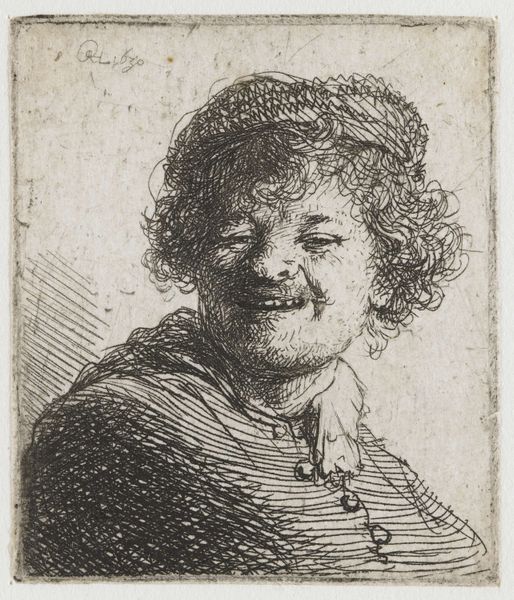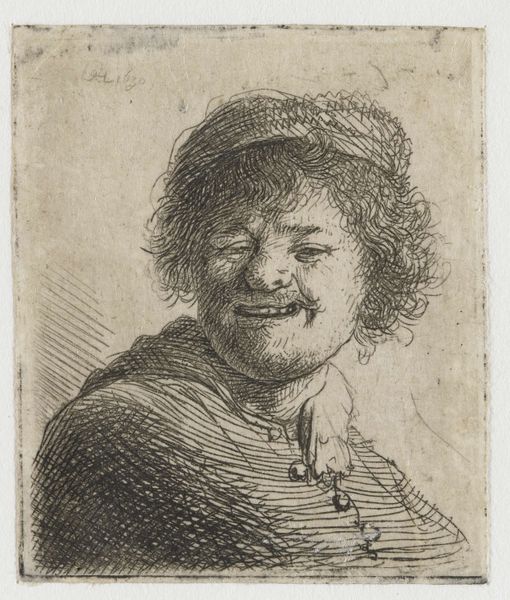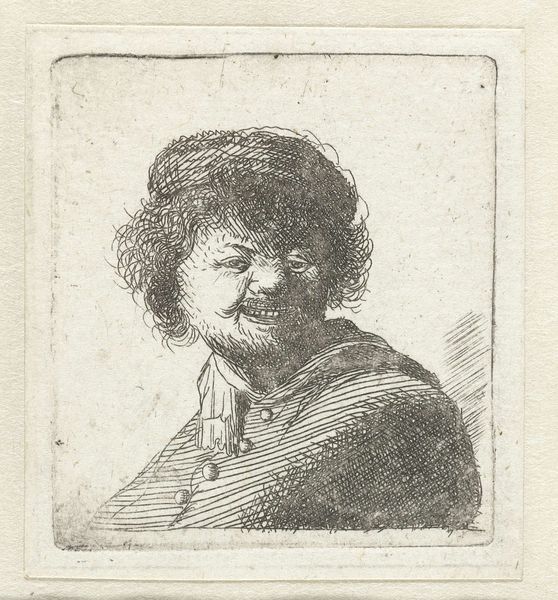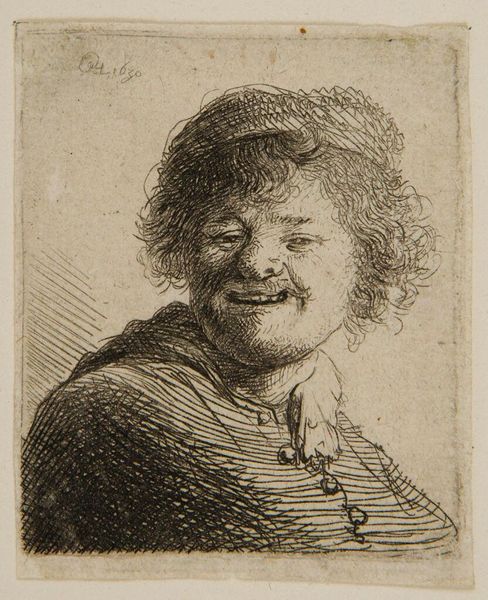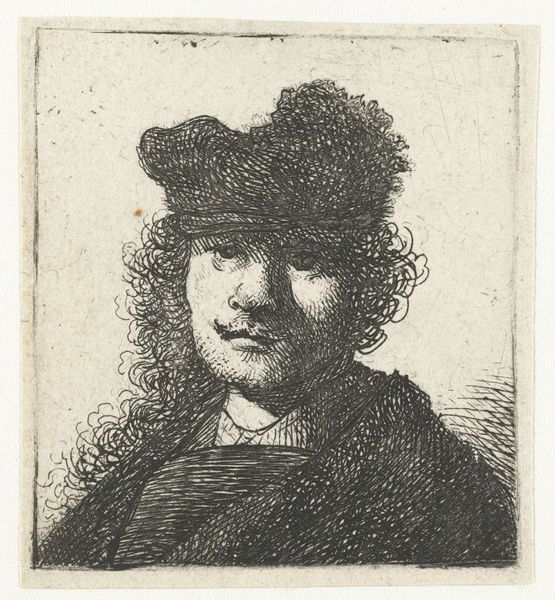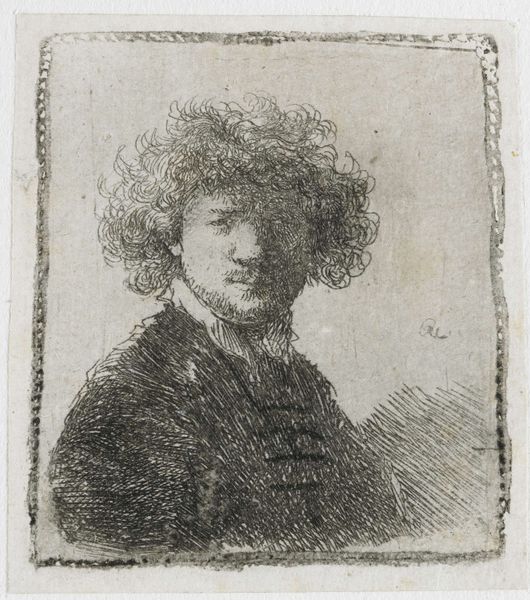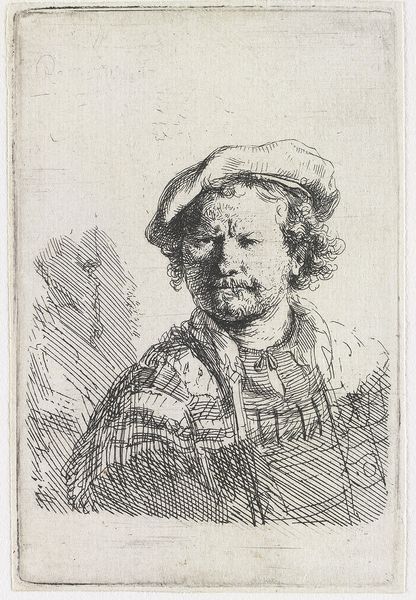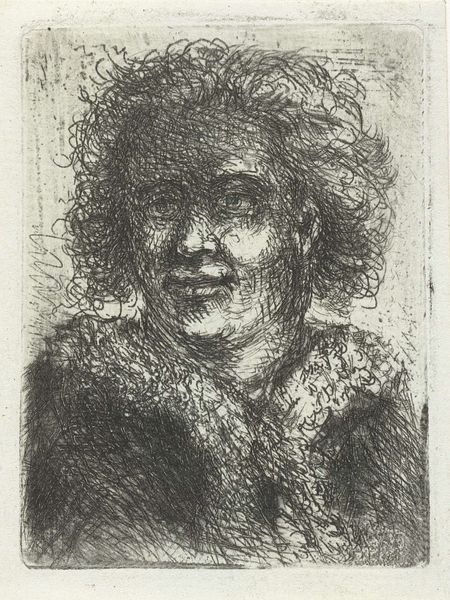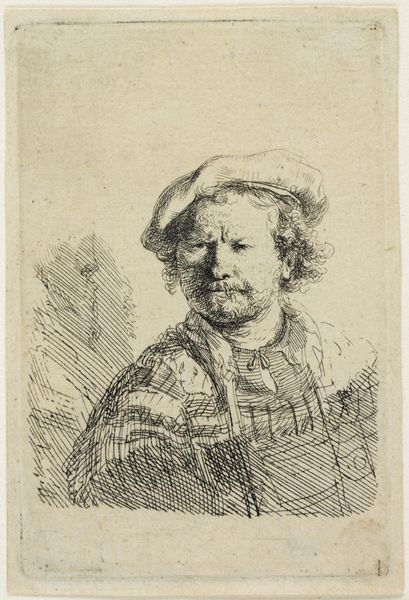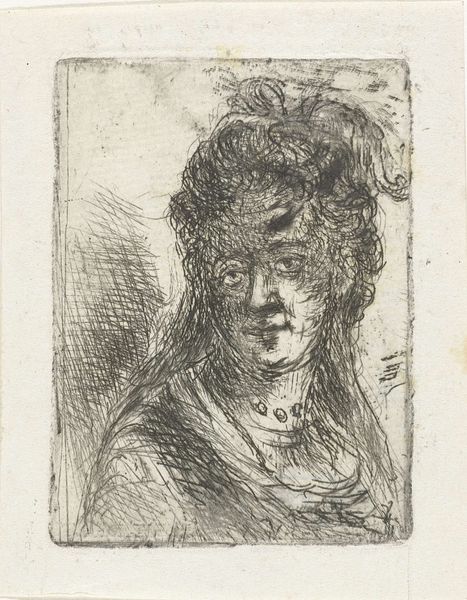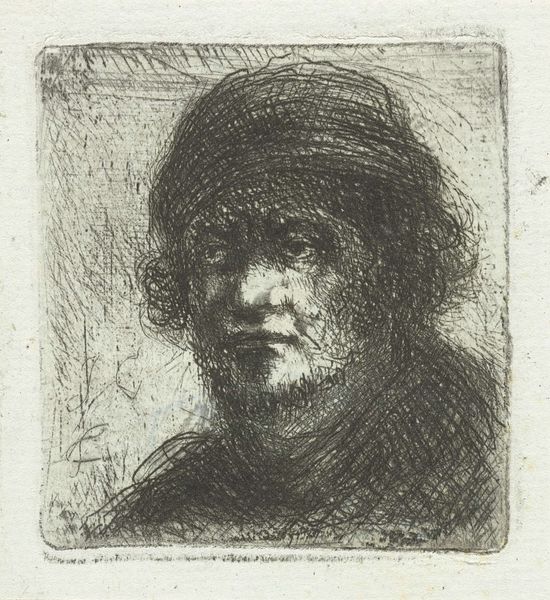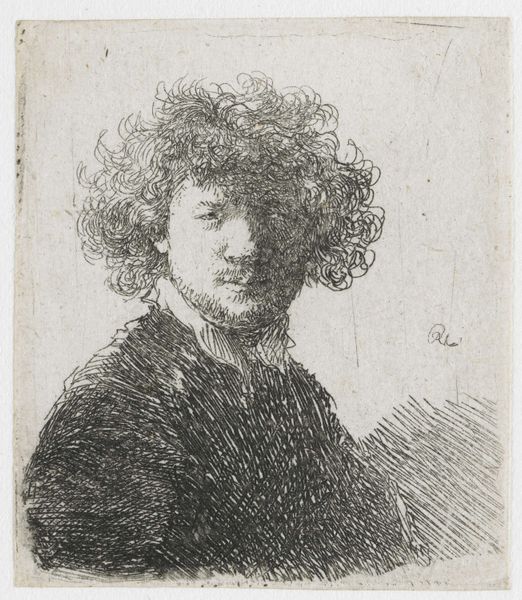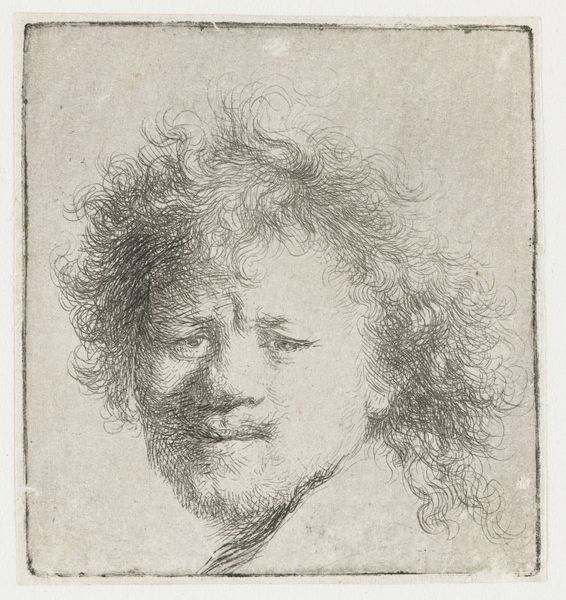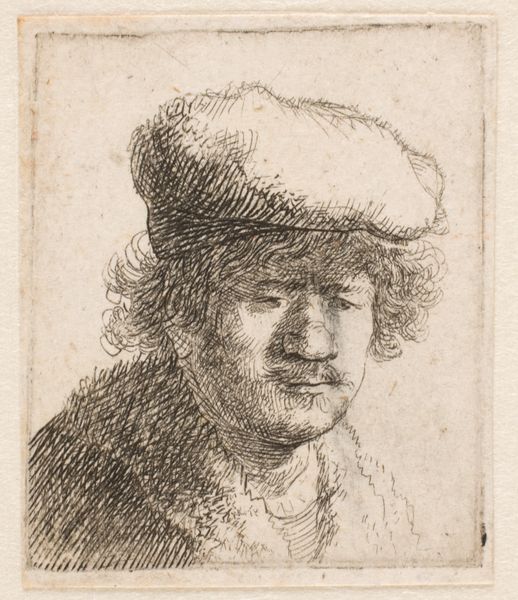
print, etching
#
portrait
#
self-portrait
#
baroque
#
dutch-golden-age
# print
#
etching
#
figuration
Dimensions: height 52 mm, width 45 mm
Copyright: Rijks Museum: Open Domain
Editor: So, this is Rembrandt van Rijn’s "Self-portrait in a Cap, Laughing," etched around 1630. It's tiny, a print really, but the emotion it conveys is HUGE! I mean, he's genuinely laughing. What strikes you about this self-portrait? Curator: It’s glorious, isn’t it? A tiny giggle captured for eternity. What I love about this particular etching is the raw immediacy. Forget posed portraits, this feels like a stolen moment. Look at the quick, almost frantic lines—like he’s trying to capture the fleeting feeling before it disappears. Don’t you think? It's as if he caught his own reflection in a mirror, was amused by something, and grabbed his etching tools to record the moment. Do you think there's a bit of performance there, maybe even self-deprecation? Editor: Hmmm, a performance? I see what you mean. It could be read as a playful awareness of himself. What's also interesting is the hat. It almost feels theatrical, adding to that idea. But it’s not exactly flattering, is it? It feels very real. Curator: Exactly! And there’s the magic. Rembrandt’s not afraid to show himself warts and all—or rather, slightly crooked teeth and tousled hair. It's this embrace of imperfection that makes him so relatable, even centuries later. It makes you wonder what was so funny. Did he get a joke right for once? Perhaps the irony is on the viewer, like we've walked in on a private moment and are a part of the joke. Editor: I never thought of it that way - that maybe WE are part of the joke. Thanks! That's a great perspective. Curator: My pleasure! It's why I keep coming back to Rembrandt. He lets you in on the human condition, one laugh at a time.
Comments
rijksmuseum about 2 years ago
⋮
Already in 1604 the artists’ biographer Karel van Mander advised artists to look in the mirror and practise in the rendering of states of mind. This is what Rembrandt does here. He looks angry, horrified, smiling. Each of these emotions recur in his work. Each of these emotions would recur later in his work.
Join the conversation
Join millions of artists and users on Artera today and experience the ultimate creative platform.
